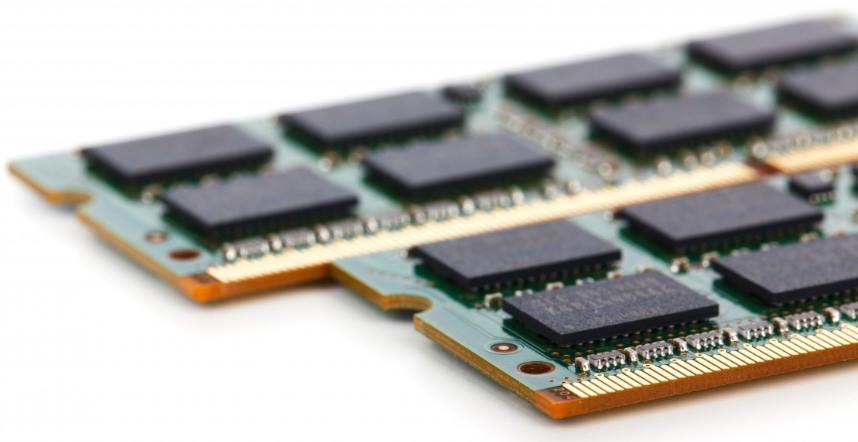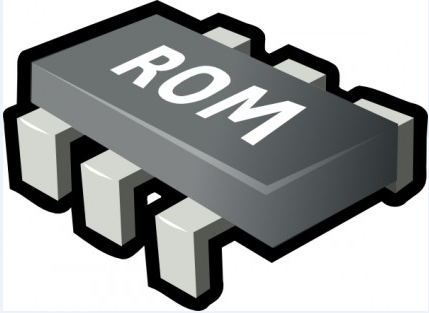In the computer, we have different types of memory which help in storage of data. One is the hard drive which stores primary data, and on the other hand, we have the RAM and ROM which are for the purpose of internal computer memory.
Different Types of Memory which Computer has:
- Random Access Memory (RAM)
- ROM meaning Read Only Memory
We can further categorize RAM and ROM into various types which are- SRAM and DRAM, and PROM, EPROM, and EEPROM respectively
Here we are going to discuss the difference between the types of memory pointed above. But before that let us understand these types in detail.
So what does RAM stand for?

RAM stands for Random Access Memory, which is a hardware element of a computer. Also, it is identified as the largest internal memory in the computer. These days, motherboards come with more than one RAM slot so that you get better speed with more RAM capacity.
But what is RAM used for?
It is mainly used to store the programs, operating systems, and data consumed by CPU in real time. However, due to its volatile nature, the data vanishes after power supply gets cut. Hence, it is not a permanent source of storage. To overcome this, nowadays there are operating systems which can manage the volatility of RAM. The data is stored on a hard drive to overcome certain circumstances wherein data is lost due to unexpected power failure.
Now let us define ROM (Read-Only Memory)

ROM or Read Only Memory, as the term suggests, can be defined as an internal computer memory, where data can just be read and not modified by the CPU (Central Processing Unit) of the computer.
Thus, let us look at what is ROM used for?
ROM is used to boot up the computer due to its programming system. It is the type of memory which retains the data, even after the power supply has been cut off. Thus, it is a non-volatile computer memory.
Read Also:
These are some quick definitions of RAM and ROM. Although both help in the systematic running of computer and keeping the data intact, people often get confused regarding the difference between RAM and ROM.
We should now move on to finding out the key differences between RAM and ROM.
RAM vs ROM: Table to answer
Here is the table to answer the question as to what is The Difference between RAM and ROM?
| RAM vs ROM – key difference points | RAM | ROM |
| Data | The stored data is temporary which can be modified, written or deleted n number of times. | The stored data is which can be modified but at very slow speed and only a limited number of times. |
| Speed | Consists of high-speed memory | Slower speed compare to RAM |
| CPU capability | The CPU is easily access the data stored on it. | The CPU cannot access the data stored on the ROM. The data has to be first copied to the RAM before it can be accessed by the ROM. |
| Size and storage capacity | It is large in size and is thinner than ROM. Also it is having higher memory storage capacity. | The size of ROM is comparatively small and also it has very low storage capacity along with the memory retention. It is made up of magnetic tapes. |
| Usage feature | Primary memory consists of two components- DRAM DIMM modules and CPU Cache (SRAM) | For ROM, firmware such as BIOS and/or UEFI, Microcontrollers, RFID tags, medical devices, as well as in devices which are able to solve issues on permanent basis are needed. |
| Cost Factor | It is an expensive component. | It is less expensive in comparison to RAM. |
| Memory Factor | It is a read-write memory. | It is just a read only memory, where data cannot be changed. |
| Working nature of data | It only stores the temporary data which CPU is processing while computer is running. | ROM stores the data or the instructions which are required during the bootstrapping process. Thus, it stores data on permanent basis which can be utilized later on. |
| Memory storage limit | It can store data ranging from 64 MB to 4 GB. | ROM cannot store much data, which is almost few megabytes. It has very less storage limit. |
| Ease of Writing | One can write data easily and effectively in RAM. | It is less effective in comparison to ROM. |
| Types | It is divided into dynamic and static RAM.Speed of Dynamic RAM (DRAM) is less than Static Ram (SRAM). SRAM stores data with the help a six transistor memory cell. DRAM on the other hand, uses a pair of transistor and capacitor which has a DRAM memory cell. | It is divided intoMASK, PROM, EPROM and EEPROM. In MASK, the data is written during the process of manufacturing of the memory chip. In PROM (Programmable Read-only Memory), the data is written once the memory chip has been created. EPROM (Erasable Programmable Read-only Memory) consists of non-volatile memory chip, so the data gets erased with high intensity UV light. In EEPROM (Electrically Erasable Programmable Read-only Memory) the data can be removed electrically, through field electron emission. |
Ending Remarks
RAM and ROM have various pros and cons when it comes to functioning. However, they are important and significant components of computer memory. On the one hand, RAM is a must for CPU processing, whereas on the other hand, ROM is helpful in booting up of the computer.
RAM has benefits, but at the same time, it can cost you a lot. However, if we talk about ROM, it is definitely cheap but still has some limitations. Still, ROM has some advanced new features now. Currently, we have this flash memory available in the market. It comes in the various form of removable storage media, famously known as Solid State Drives, USB drives, SD cards, etc. These are nothing but an advanced implementation of the EEPROM type of read-only memory. These devices provide faster storage solution in comparison to traditional hard drives. However, the issue of read/writes at an operational front still remains.
The major differences between RAM and ROM have been specified above, which would be helpful if you find anybody facing the confusion. Also, these facts can help you understand in a better way how the computer actually works. Hence, just like a computer geek, even you are now aware about the differences.
